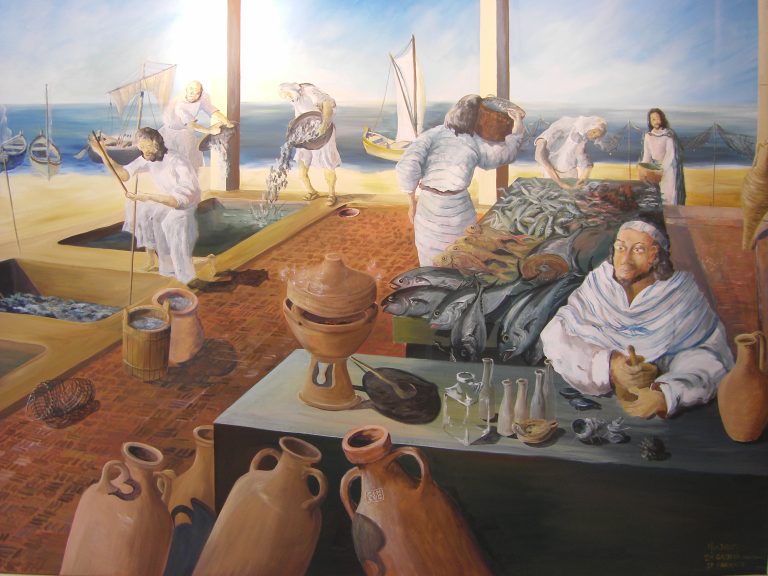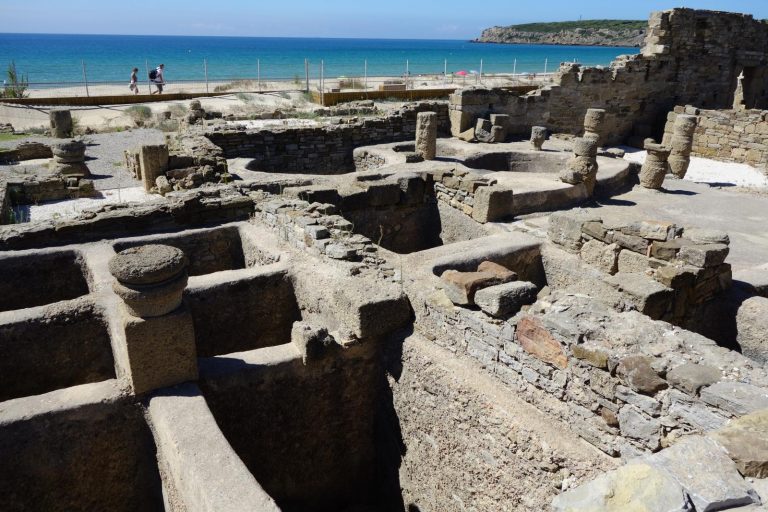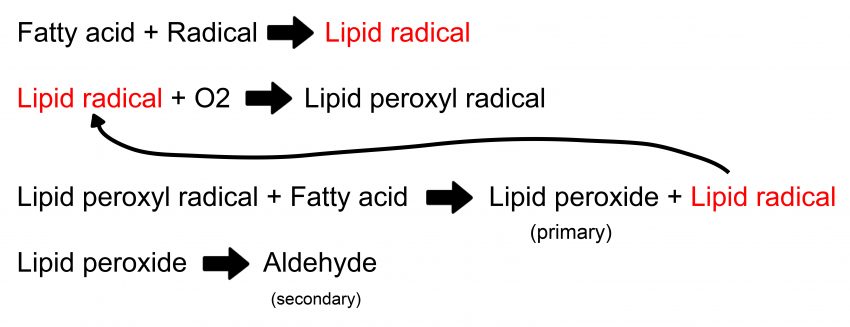History of cod liver oil
A Brief History of Garum / Fish Oil
There is evidence that the consumption of fermented fish sauces as garum dates back even to the Bronze Age (at least 2,600 years ago), but because nothing has been recorded in writing, there are few detailed records available. As we gradually move into the Iron Age, we find more and more evidence that fish sauces were an important part of life in Europe, especially in the Celtic regions. In fact, the westernmost part of France, also called Armorica, was widely known for its production of high-quality garum. (Interestingly, the fictional characters Asterix and Obelix, who fought against the Roman Empire, lived in this area. Perhaps garum was the secret magic potion that granted them superhuman strength)….
Garum fish oil and the Romans
Legend or not, it is certain that fermented fish sauces were consumed in Europe before the Roman Empire expanded into France and England. However, it was the Romans who popularized and commercially produced garum across the entire European continent.
Evidence for the existence of garum factories is found throughout the Roman Empire, and these factories show that 2 different varieties were manufactured. One variant was ordinary garum, which was made in large quantities and used regularly as a flavoring in dishes. The other variant was made in much smaller quantities for medical purposes and was called garum armoricum (after the French area). A popular species of fish used to produce high-quality garum armoricum was tuna, which could only be caught once a year during migration to spawning grounds. Since tuna is a very oily fish, garum was most likely rich in omega-3 fatty acids, which may well be a reason why it was associated with good health.
Fish oil for the military
This garum was used by the army, athletes and women and children who were considered “weak,” as it was considered conducive to vigorous and good health. Clearly, its benefits were widely recognized in all parts of the Roman Empire. However, as the Roman Empire fell into decline, the price of salt skyrocketed, so garum could no longer be produced. After this, fish sauces were no longer manufactured on this scale in Europe and were largely forgotten, with the exception of a few small, isolated communities.

Production of fish oil / garum
Recipes for garum vary by region, but they all follow the same basic principle. Small fish (or the organs of certain types of fish, such as tuna) are piled in vessels. Between each layer of fish or fish organs is a layer of salt or sometimes spices. This is then left to ferment (often in the sun) for 1-6 months. After that, the liquid can be filtered and shipped to all parts of the empire as flavoring or medicine.
Based on the same basic recipe used by the Romans, Green Pasture has managed to produce a fermented cod liver oil. Cod livers are mixed with salt and a culture liquid, then fermented for several months before the oil is filtered out. From talking with David Wetzel of Green Pasture, the only real difference between what the Romans did and what they do is the use of a grafting liquid. At Green Pasture, they save some of the brine from previous fermentation products to use for further production. This ensures that the same bacteria are responsible for the fermentation and the final product remains consistent. Furthermore, at Green Pasture they ferment their cod livers the same way the Romans did.
The production is simple and traditional, but to those familiar with the biochemistry of fatty acids, it does not sound like this can produce a healthy oil. The fatty acids in this type of fish are predominantly polyunsaturated, and these oxidize particularly quickly. Oxidation from prolonged exposure of these fatty acids to such conditions seems inevitable, which would therefore make these fatty acids toxic.

Stability Garum fish oil
The Romans and Gauls did not know exactly what was going on in the mixture, they just knew that garum was good for you. Based on modern research, however, we are able to take a much more accurate look at exactly what goes into the production of garum.
Microbial stability fish oil garum
The high salt content is extremely important because it determines which bacteria take care of fermenting the product. The fermentation process is very similar to that of putrefaction, but there is an important difference. Fermentation is a controlled process, while putrefaction is uncontrolled. This means that with a fermented product, you have control over the type of microorganisms involved and the circumstance and duration of fermentation, allowing you to accurately determine the final product. In contrast, putrefaction is uncontrolled and the end product is unknown (and often bad for you).
The very high salt content prevents harmful bacteria from growing in food1 but is tolerated by specific bacteria, including Lactobacilius spp and Enterobacteria spp2,3. They thrive in this very place and produce lactic acid as a byproduct of carbohydrate conversion (derived from glycogen in the fish organs or in the added herbs). This lactic acid lowers the pH of the whole, which in turn prevents other bacterial species from colonizing the product. This makes the fermentation process extremely stable and makes colonization by other bacterial species virtually impossible. This is a similar process to the fermentation of other food products, such as fermented sausages and vegetables.
Chemical stability fish oil garum
Its chemical stability is of utmost importance, as polyunsaturated fatty acids are extremely susceptible to oxidation. In addition, the oil contains a relatively high content of free fatty acids (up to 20%), which are susceptible to oxidation. Some free fatty acids occur naturally, but others are again the result of hydrolysis of triglycerides by fermentation bacteria. Hydrolysis is a process in which fatty acids break loose from their glycerol base via the enzyme lipase (the same way our digestive system breaks down fats) and the fatty acid molecule is released. These dislodged triglycerides pose no risk and are natural (you can even argue that they are now easier to absorb). However, the fact that they are part of a high content of polyunsaturated fatty acids does give cause for concern, because of the risk of oxidative rancidity.
Despite this concern, we know that the oil is stable (see account below), but how it remains so stable we do not know exactly. There are some factors that may explain or at least contribute to this stability, but more research is needed to know the details:
Fish oil: Anaerobic conditions
Lactobacillius spp are certain species of bacteria called facultative anaerobes, which means they can use oxygen if it is present, but can also survive without oxygen. During the fermentation process, these bacteria quickly convert all the oxygen in the mixture and then switch to an anaerobic metabolism. This produces carbon dioxide, which bubbles to the surface and forms a carbon dioxide layer there, which prevents oxygen from entering the oil. If oxygen cannot enter the oil, the risk of oxidation is significantly reduced.
Fish oil: carotenoids
Fish themselves possess highly refined and effective antioxidants necessary to prevent their high fat content from oxidizing and becoming toxic. Fish and many other forms of seafood contain various carotenoids (including astaxanthin). To date, over 180 different carotenoids have been found in seafood5 and more are sure to be identified. Some can be converted to vitamin A, but many cannot, and the role they play in fish is not entirely clear. However, research does show that almost all carotenoids are powerful antioxidants and are very effective in protecting fats from oxidation. Some even possess self-regenerative properties, where a single molecule can extinguish 1,000 singlet oxygen molecules. Although they possess impressive protective properties, their abundant presence in oils combined with our lack of knowledge about them makes it difficult to fathom the degree of protection they provide.
Fish oil: Quinones
Fish tissue is particularly rich in several quinones, such as Co-Q10, a well-known fat-soluble antioxidant. How these act as antioxidants is still conjecture – possibly they recycle other antioxidants (such as carotenes) or act as primary antioxidants themselves. What we do know is that they exert impressive antioxidant properties, but again, their impact is difficult to determine because so little is known about their abundance in the oil and the mechanism behind this.
Fish oil: Amines, amino acids and peptides
All of these possess a complicated potential to exert potent antioxidant activity. Amines are of particular interest because they are naturally present in fish. Some fermenting bacteria (such as enterobacteria) can produce amines from fish proteins6, increasing their concentration. Amines, amino acids and peptides can all serve as primary antioxidants, bind to pro-antioxidant metals or mix with other antioxidants. This creates a very diverse and flexible form of antioxidant activity. The amines putrescine, spermidine and spermine7 in particular are known to possess lipid-protective properties and are found in oil produced by the fermentation of cod livers. Again, their influence on the oil is not really known and although we find several amines in the oil we do not know what their content is, nor do we know if the oil contains antioxidant peptides.
Fish oil: Vitamins – Vitamin A
Vitamin A found frequently in fish oils is a proven antioxidant. It is chemically related to the previously mentioned carotenoids, but we understand its mechanisms much better. Vitamin A is known to play an important role in the prevention of the peroxidation of fats8 and as such provides natural protection to the fats in this product.
Other – There may be other mechanisms at play that we have not yet identified. The bacteria themselves can produce all kinds of chemicals with their own antioxidants to protect themselves. It is very possible that these are helpful in protecting the oil from radical damage.
As you can see, there is great potential for the formation of a very potent antioxidant, protective environment for the oil. It is impossible to say for certain exactly what is responsible for its stability, and it is possible that this chemical stability is not even attributable to the compounds described above.
Evidence for the stability of fish oil
Because so little is known about the antioxidant mechanisms involved in the oil, it is easy to be skeptical and completely question its presence. We know the oil is stable, but how do we know this? Understanding the “how” behind stability is extremely complex, but understanding the “if” is relatively simple. We know that the oil contains a multitude of polyunsaturated fatty acids and free fatty acids, and we know that in an unstable environment, these fatty acids oxidize and undergo a series of chemical changes:

The image above shows the different stages an oil undergoes when it undergoes oxidative rancidity. The image shows that the lipid radical created in the 3rd stage can be reused to initiate the 2nd stage. This creates a chain reaction, allowing fats to be broken down at lightning speed into aldehydes (one of which is a common malondialdehyde9). The aldehydes themselves are not very stable and can be further broken down into smaller, volatile compounds. What is important here, however, is that when the oil is unstable the fats are converted into lipid peroxides and aldehydes. This chemical change is very easy to test in a lab. A simple method is to test for the presence of fats in the oil (their presence shows that they have not broken down). Below are some lab tests of Green Pasture’s oil, the percentage of each fat type is circled. Together they make up 99% of the oil – showing that the fats have not undergone chemical alteration.
You can verify this for yourself by testing for aldehydes. The common test for this is a TBA test that binds to malondialdehyde (a common aldehyde produced when polyunsaturated fatty acids become rancid)10. The results of this test are shown below and the level is extremely low.


It is worth mentioning that the TBA test has its limitations and may give abnormally low values in certain circumstances. However, the lack of malondialdehyde is a promising sign. (There are other similar tests you can perform to measure degradation products, but they all have their shortcomings – anyway, the tests performed on fermented cod liver oil show very low values).
Again, you can verify this by looking at the fatty acids present. Some fatty acids are more susceptible to oxidation than others. Long-chain polyunsaturated fatty acids are among the most vulnerable, and looking for the presence of these fatty acids gives an indication of how reactive the environment is. If an oil is reactive, you usually won’t find any of these fats because they are the first to break down and undergo chemical changes.
A good polyunsaturated fatty acid to look for is the omega-3 fatty acid DHA. This consists of a chain of 22 carbon atoms with 6 double bonds, a sign of oxidative damage. A substantial content of it is also expected to be found in the oil. Back to lab results:

DHA occupies 7.43% of the oil, which is within the limit of what you might expect from this type of oil.
The data from the test show that the fatty acids are not damaged. While this doesn’t get us anywhere in terms of how, it does show that the fats are somehow protected.
What makes this oil all the more mysterious is that aldehydes cannot be created in this oil using methods that do allow it in other fish oils. It is quite easy to force the oxidative reaction based on various heating experiments, but for some reason it fails with this oil. This raises more questions than it answers, and it indicates how little is known about this oil. Nevertheless, it is an interesting observation that is worth including in this account.
Summary Fish Oil Garum
Fish oil “supplements” like cod liver oil are not as new an invention as most people think. Evidence of people enjoying the oil-rich juices of fish like tuna for medicinal purposes reaches back further than the Roman Empire. Then, as now, its health benefits were widely recognized (though not understood). The processing methods used to make products like garum were very safe and chemically stable. Green Pasture has recreated the same production methods used by the Romans to manufacture a garum-like cod liver oil. Testing of this oil indicates that it is extremely chemically stable. However, despite all modern analytical techniques, we still cannot explain why this oil is stable – all we can do is speculate about it and identify possible mechanisms for this.
